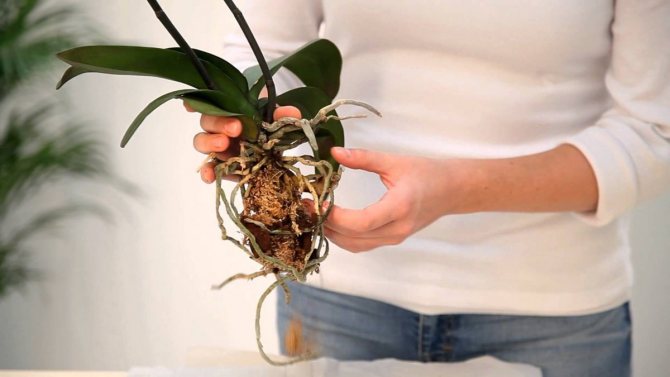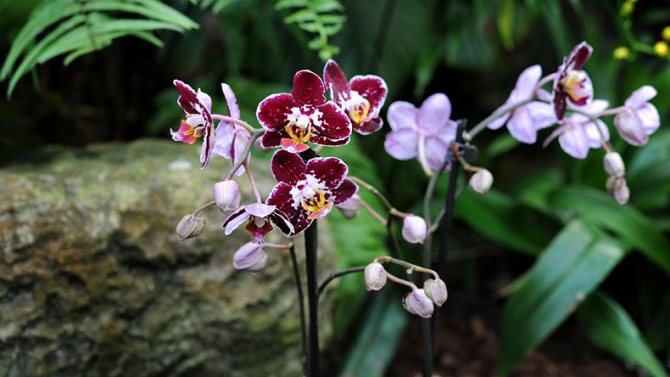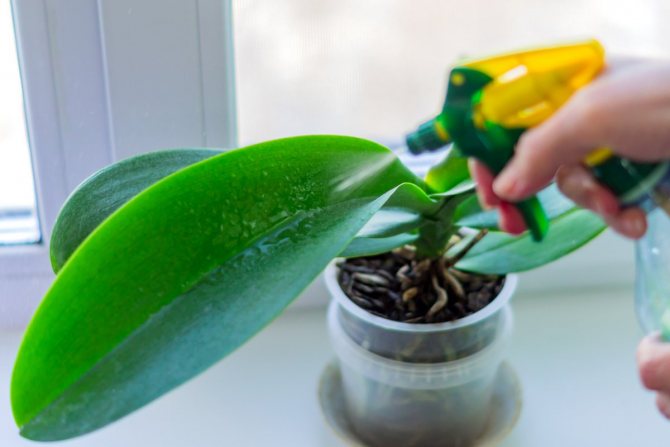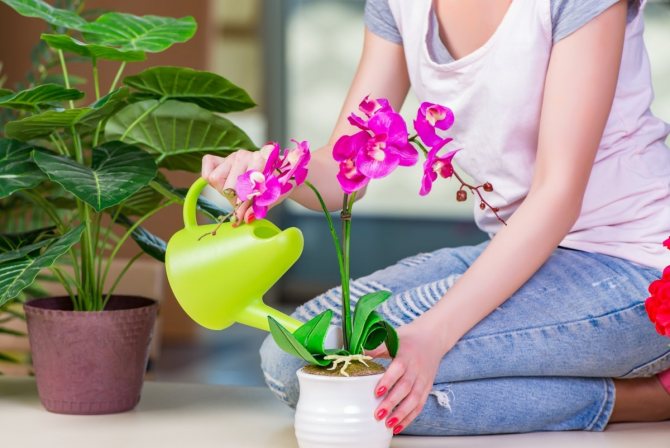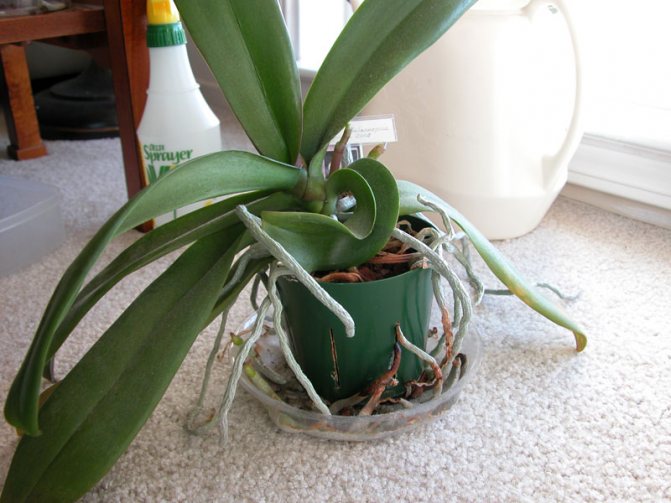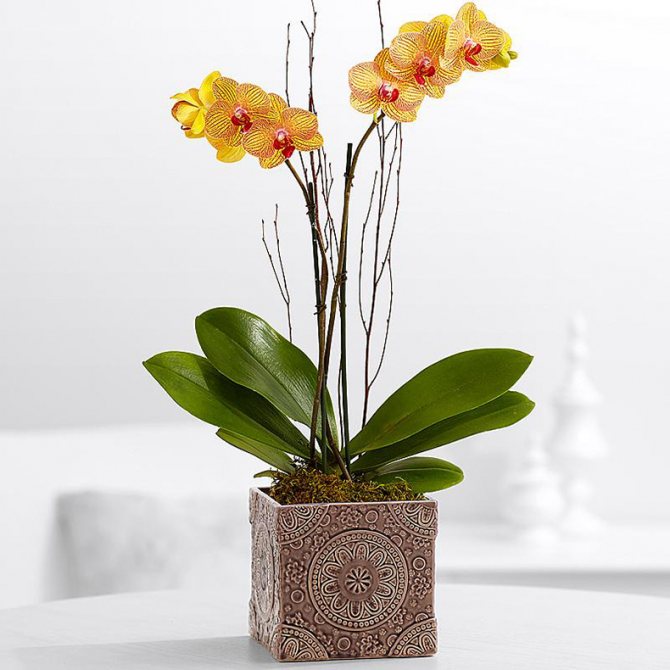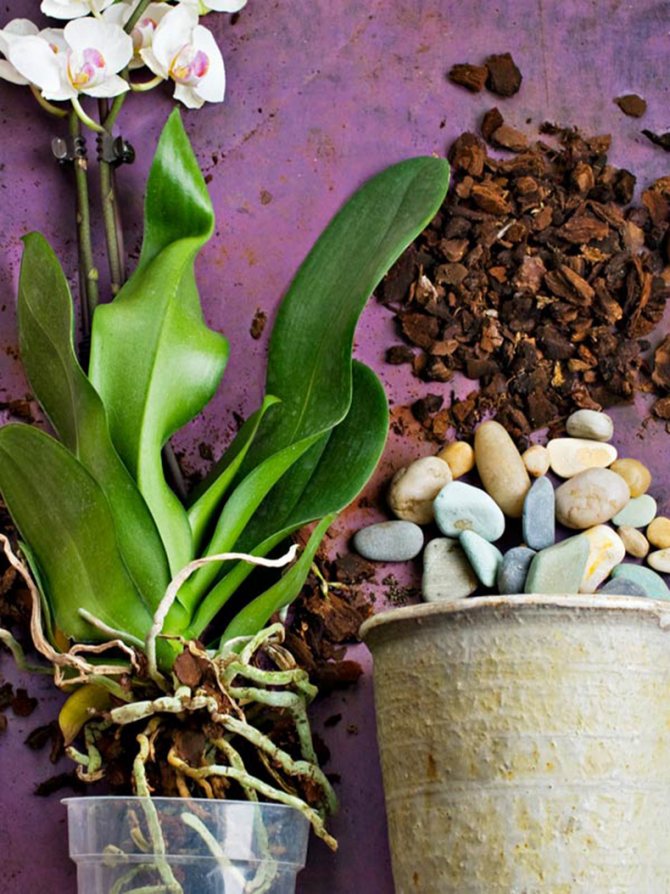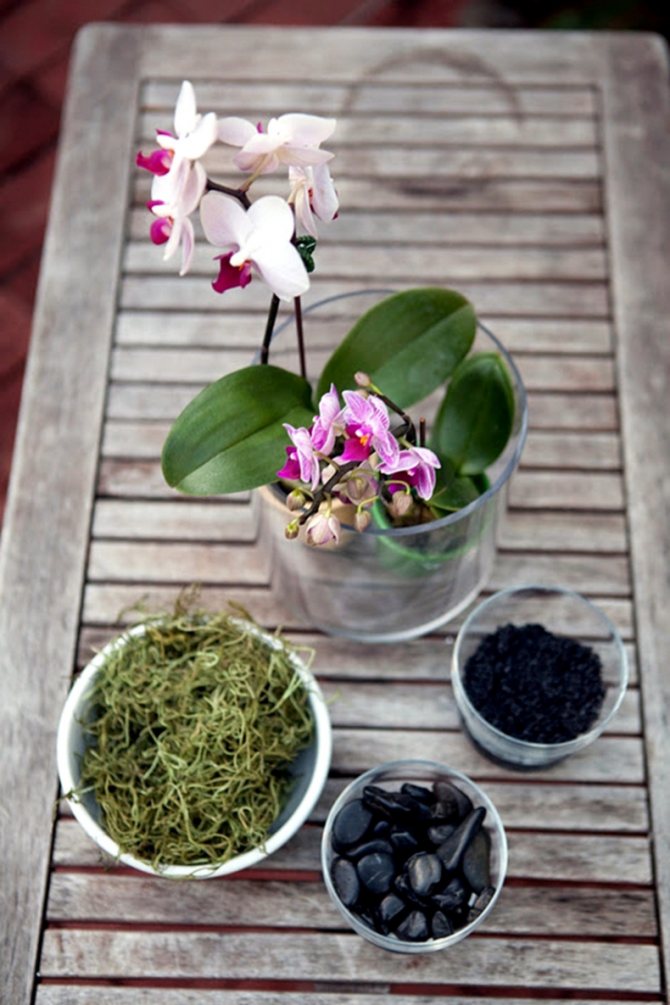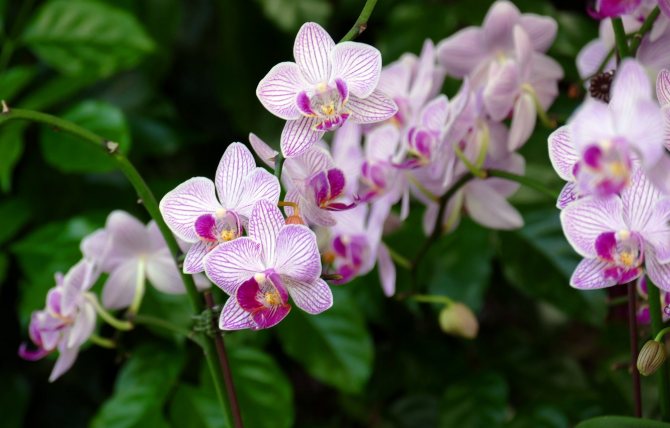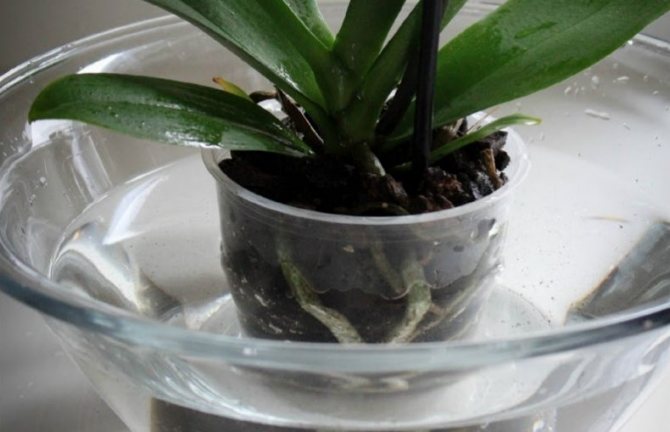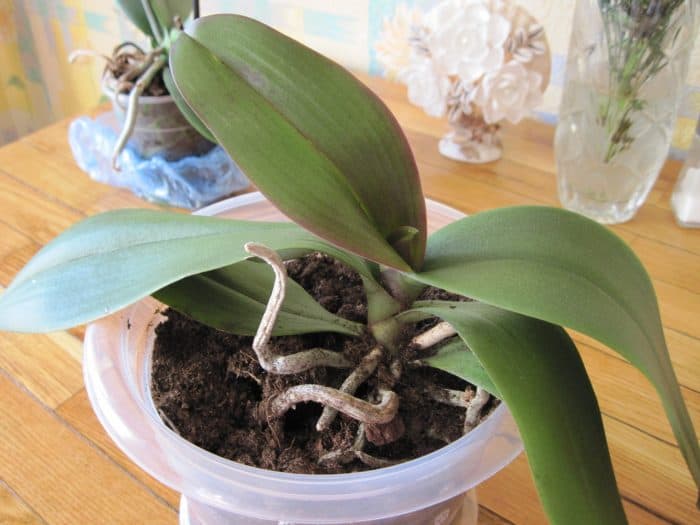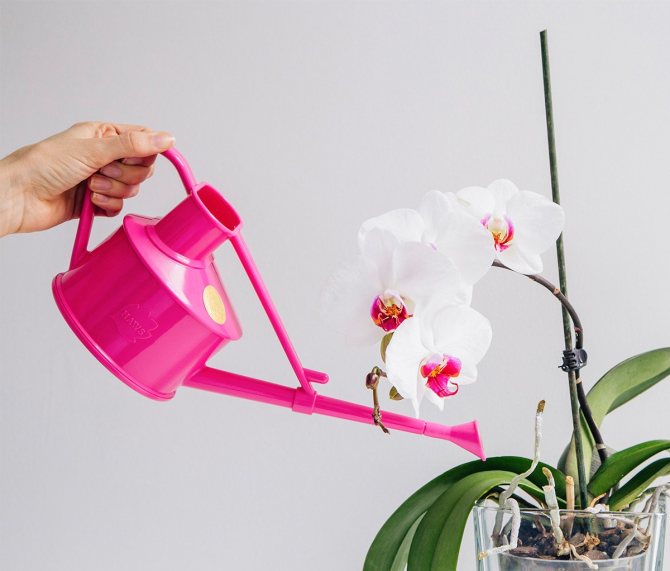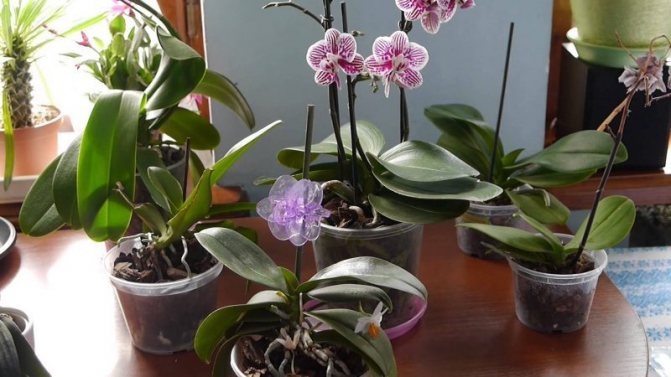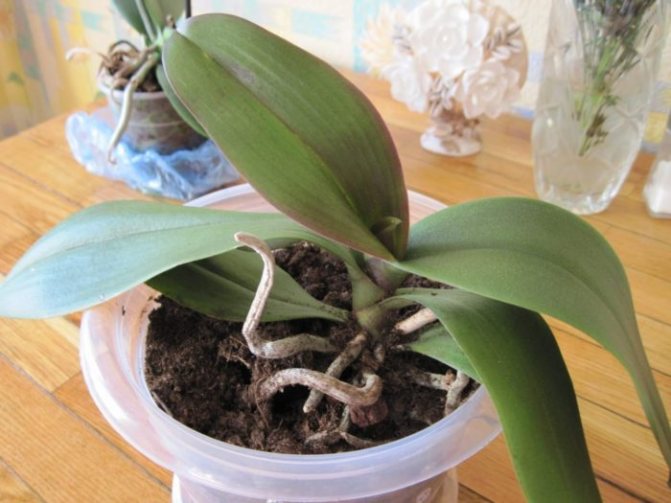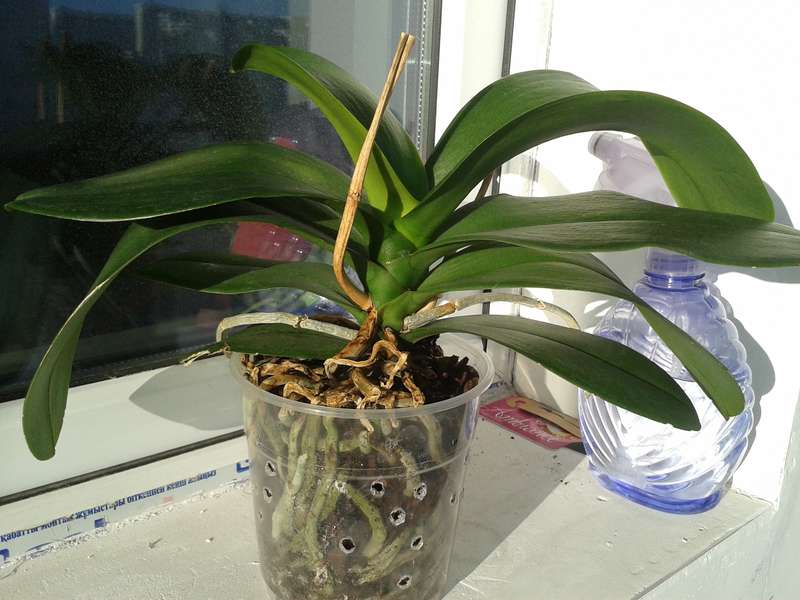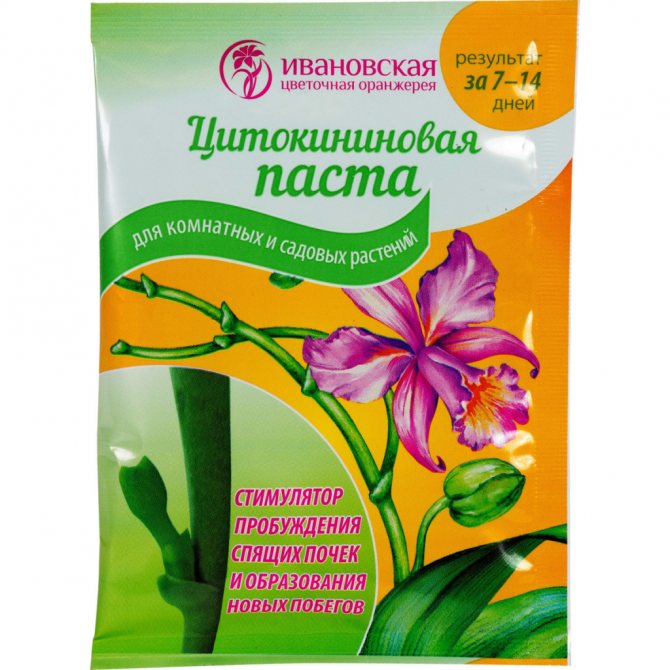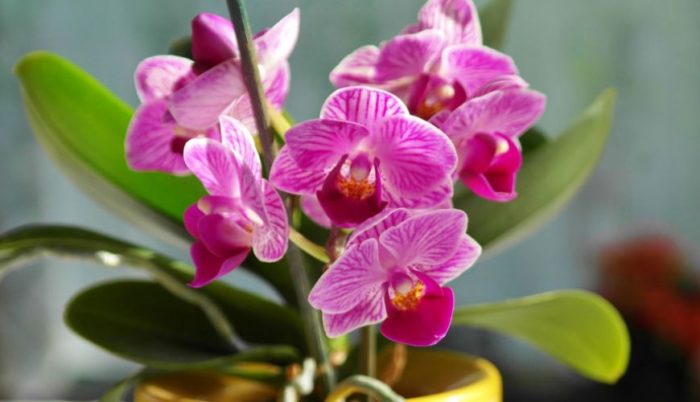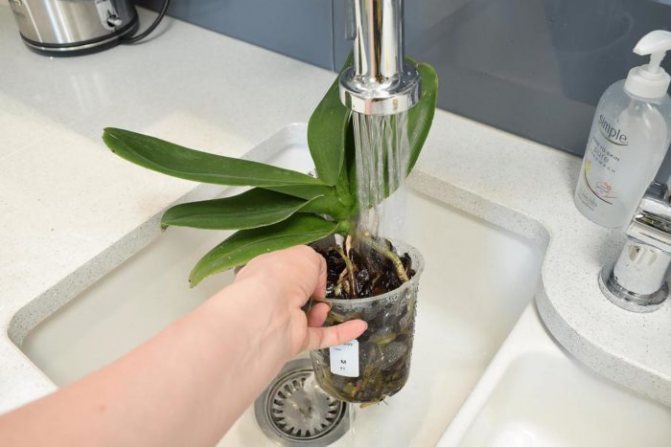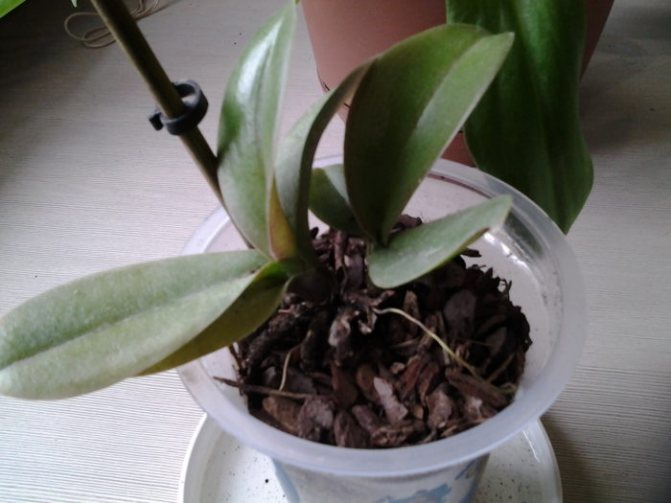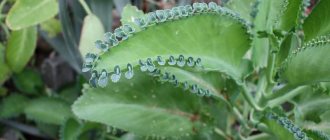Why orchids stop blooming
Florists do not skimp on compliments to the orchid: they call it beautiful, exquisite, exciting ... The bizarre shapes of its flowers are compared with butterflies, pigeons, all kinds of insects.
But exotic beauties delight not all owners with flowering. However, you shouldn't blame them. It is worth carefully analyzing what mistakes in care prevent the beautiful Tropicans from blooming regularly and abundantly. With proper maintenance, flower stalks appear constantly, in some species flowering lasts up to six months.
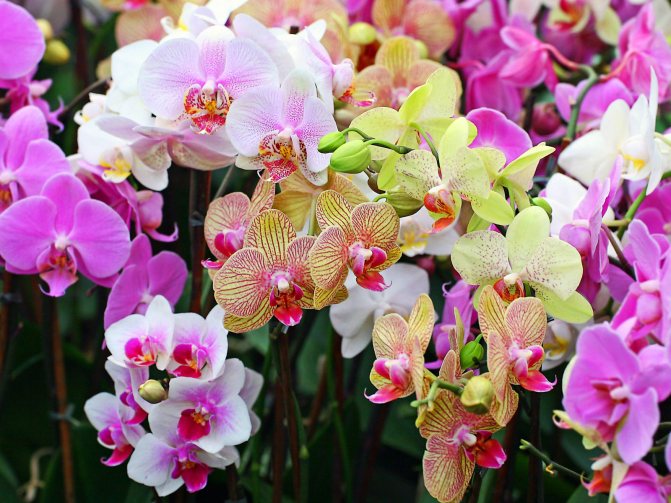
Orchid flowers amaze with a variety of shapes and colors
There may be several reasons for the lack of flowering. Among the most common:
- unsuitable temperature;
- insufficient lighting;
- waterlogged substrate (especially at low temperatures);
- dehydration;
- inappropriate soil and pot;
- drafts;
- falling buds;
- pests and diseases.
Means for solving basic problems
To achieve flowering, the orchid needs to provide conditions close to those that exist in its natural habitats.
Achieve optimal temperature conditions
Orchids need a difference between day and night temperatures of 3 to 5 degrees. Slight temperature fluctuations during the day are also useful for the plant.
Too high daytime temperatures are a big obstacle to flowering. The critical upper mark is +32 ° C. With too much heat, the leaves begin to evaporate a lot of moisture, become rough and wrinkled, and eventually get sick and collapse.
In summer, shade the orchid from direct sunlight to prevent burns and overheating. Even the most light-loving orchids need to be protected from direct sun. Do not forget that in natural conditions orchids grow in the shade of trees.
Summer daytime temperatures:
- For thermophilic orchids (phalaenopsis, wanda, dendrobium, oncidium), the summer temperature should be within + 21-29 ° C.
- For species of moderately warm content (Cattleya, odontoglossum, miltonia), the optimum temperature is + 18-24 ° C.
- For plants that love coolness (Lelia, Pafipedilum, Australian Dendrobium), the summer temperature should not exceed +21 ° C.
Night temperatures in winter:
- Heat-loving orchids in winter should not remain at temperatures below + 15-18 ° C.
- Orchids of moderately warm content require at least + 12-15 ° C.
- For orchids that love cool content, the most comfortable night temperature in winter is + 7-10 ° C.
In winter, orchids should not be placed near heating appliances. The flower needs to be moved to a cooler room. If this is not possible, then you should often ventilate the room. Another possible cause of overheating in winter is the hanging lamps too low for illumination, in such conditions the flower can even get burned.
The critical lower temperature mark for orchids is + 5–8 ° C. At lower values, the orchid may die.
Do not place the orchid pot directly on the windowsill in winter, the soil should not be very hot or cold. Place styrofoam or a stand under the bowl.
Make the lighting you want
Orchids need diffused but bright light for 12-16 hours a day. Longer daylight hours have a negative effect on the ability to bloom.
Oncidium and dendrobium are unlikely to bloom unless completely protected from any light source (even a table lamp) at night.
In winter, with insufficient lighting, it is necessary to supplement the orchids with fluorescent lamps, which are recommended to be installed in such a way that the light falls on the plants from above, and not from the side. For better light reflection, mirrors can be installed on the sides of the window.
Orchids are placed on the southern and eastern windows, the northern ones do not suit them at all.
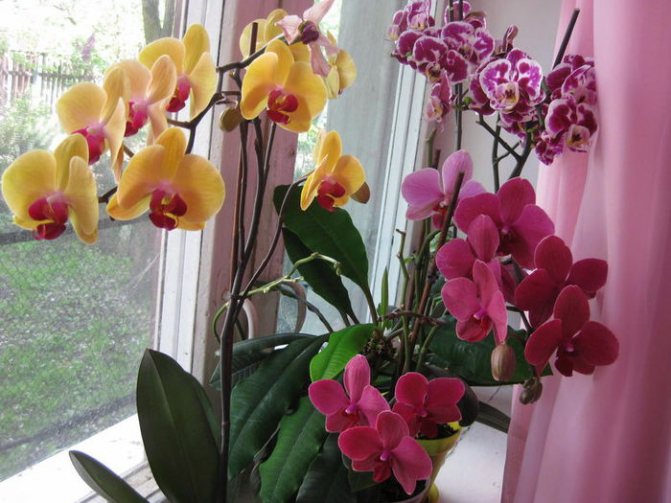

Orchids thrive on south or east windows
Do not move your orchid directly from a shady place to bright light. Adapt to brighter light gradually over several days.
There are specialized phytolamps for plants on sale: fluorescent, LED, induction. Lamps with different light spectra have been created: for growth and for flowering. For orchids, it is better to use universal phytolamps close to the solar spectrum.
Causes of both waterlogging and dehydration
Both of these problems are most often associated with improper watering. You cannot water the orchid just from the watering can. She is watered by placing the pot in a container of water.
How to water properly
- Prepare a suitable size bowl or bowl, pour warm water.
- Place the orchid pot in there. When the roots turn bright green, you can remove the flower from the water.
- If the substrate has been overdried, after a short period of time, once again lower the orchid into a container of water.
- After watering, place the orchid pot on a container or wire rack to drain the excess water.
- From a watering can, you can add water to the substrate if its top layer remains dry.
- To prevent the substrate from drying out too quickly, place sphagnum moss on it. It must be changed three times a year.
As a general rule, orchids should be watered 1-2 times a week during the growing season, and twice a month in winter. However, this is not a dogma, deciding to water an orchid today or wait until tomorrow, you need to take into account the dryness of the air, and the temperature, and the state of the substrate. Old soil retains moisture longer than new soil.
There are orchids that need a dormant period, and there are those that do not need it or do not need it at all. This must also be taken into account. During dormancy, the flower should be watered so as not to dry out the substrate.
How do you know when to water your orchid? If there is no condensation on the walls of the pot, and the roots of the orchid become gray-green or silver-gray, this is a signal that the flower needs moisture.
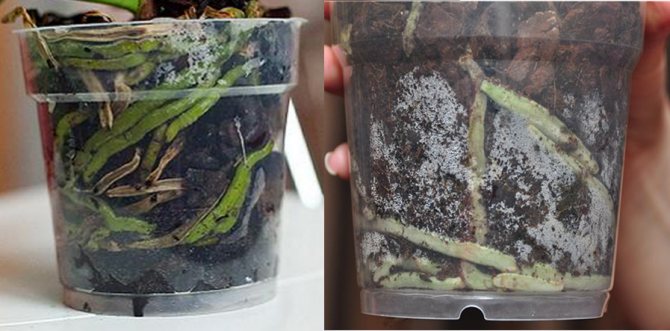

The orchid on the left is sufficiently moistened, the roots of the plant on the right have already lightened, but there is still a lot of condensation - you can wait with watering
Do not water the orchid with cold and hard water. Use boiled or filtered. If necessary, heat it to a temperature slightly above room temperature.
It is very good to water the orchid with rain or melt water. The latter can be obtained by placing plain water in the freezer.
Video: watering an orchid
Spraying
Dehydration can be avoided by regularly spraying the plant. Do this in the morning so that by the evening there is no water on the leaves, and especially in the leaf sinuses, blot them with a cotton swab or napkin if necessary. It should also be sprayed only with warm soft water.
Two more ways to humidify the air:
- Put a pot with an orchid in a container, on the bottom of which a layer of pebbles (3-5 cm) is laid and water is poured.
- Install an electric humidifier.
Substrate composition
It is very important for the flowering of an orchid, in which substrate it grows. Mixtures with the addition of peat, polystyrene, earth, sphagnum moss, coconut flakes are completely unsuitable for this plant.
The soil intended for orchids should be at least 80% bark.
Possibly adding:
- birch coal;
- expanded clay;
- a small number of pieces of ceramic tiles;
- coarse perlite;
- pieces of mineral wool.
There should be drainage at the bottom of the pot. Do not use styrofoam for this purpose: it does not absorb water, but when watering it can squeeze the flower out of the pot.
An important condition for good flowering: there should be no voids between the roots of the orchid. The substrate should fit snugly around the roots.
Of the ready-made substrates, the mixture "Seramis" made in Germany has proven itself very well. All types of orchids are successfully grown there.
How to choose a pot
It must be transparent, as the roots of the orchid need a constant supply of light. In such a pot, the condition of the roots is clearly visible and it is easy to determine whether it is time to water the plant.
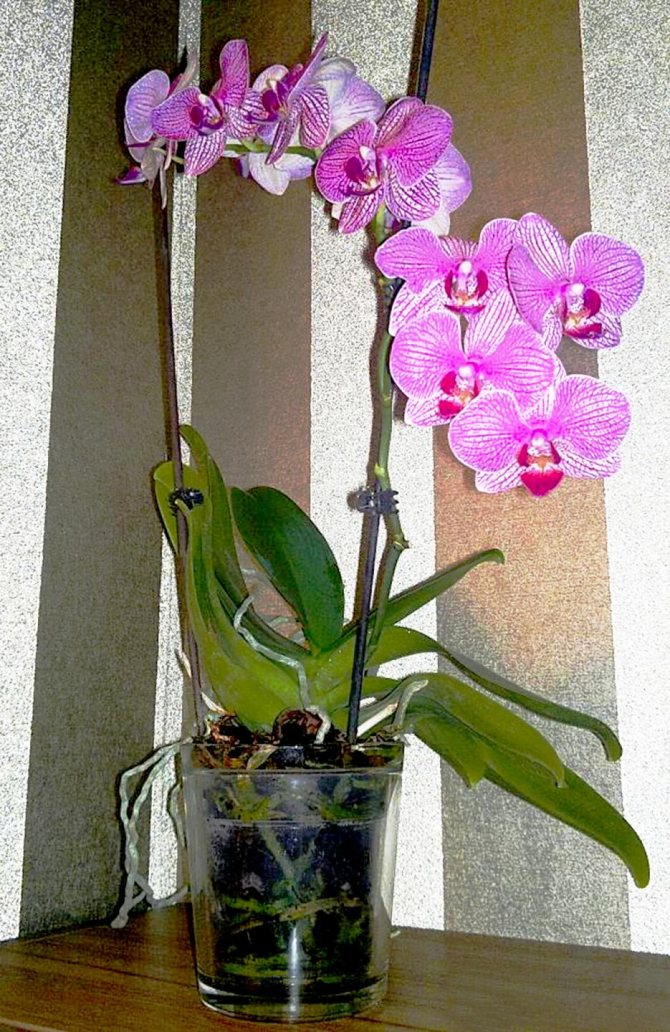

It is in such unsightly pots that orchids feel best.
If you do not like its appearance, choose a suitable planter with holes, remembering that there should be no obstacles to the flow of air and light to the roots.
The choice of the pot depends on the humidity in the room. In a dry microclimate, a container with slots at the bottom would be the best option. When wet - with slots at the bottom and sides. The side holes should not be too large, and the bottom holes should not be large enough to draw in water well when watering.
You can use a wooden planter, but first treat it with a mold prevention product.


An ideal combination for an orchid - a transparent pot and a beautiful, openwork planter
How to properly ventilate
Drafts are harmful not only to human health, but also to the condition of orchids. However, tropican women need fresh air, so ventilate the room in which your flowers are located, but do not allow drafts. Should not come into direct contact with the plant and cold air.
A fan can be used in a stuffy room. Place it in front of the orchid and turn it on to the minimum setting.
What can cause the buds to fall
Maybe so: the orchid finally bloomed, and suddenly the buds began to fall off. What could be the reason?
- a sharp change in conditions of detention, overheating or hypothermia;
- moving a flower from one window to another;
- eating disorder;
- diseases or pests.
When you see that the orchid is about to bloom, try not to rearrange it to another place.
Strong overheating leads to the death of the buds, and sharp cooling - to the fall of all the buds. Therefore, carefully monitor the temperature and avoid overheating or hypothermia of the substrate.
Correct feeding
Orchids are usually fed every second watering. Use only special orchid food. Never exceed dosage.
It is important to feed the orchid from the time when it began to sprout until the first flower appears. While the flowering is in progress, you do not need to fertilize the orchid.
Video: how to feed orchids at home
General Provisions
On average, the duration of the flowering of the phalaenopsis orchid lasts about three months. As a rule, this happens two to three times a year and depends on both the growing conditions and the type of orchid.
The dormant period between flowering can take several months. Its end largely depends on the conditions of room maintenance, which it is desirable to bring as close as possible to natural, providing the plant with:
- good illumination;
- regular correct watering;
- optimal temperature conditions;
- lack of drafts in the room;
- sufficient air humidity.
Orchid does not like stress, even a slight movement of the pot relative to the light can adversely affect the formation of the peduncle.
Advice! When buying phalaenopsis, pay attention not only to the beauty of the flowers, but also to the condition of the root system, on which the health and well-being of the plant depends.
Flowering stimulant - cytokinin paste
You can stimulate orchid flowering with a phytohormonal preparation - cytokinin paste.
Effect of cytokinin paste on peduncles:
- awakens dormant kidneys;
- stimulates growth;
- forms viable shoots;
- accelerates flowering;
- regulates the metabolism of the plant (especially when growth has stopped), preventing aging and dying off.
You need to apply the paste in late winter or early spring.
Procedure:
- Gently remove the scales covering the kidney with tweezers.
- Using a toothpick, apply a small amount of the paste to the kidney and spread the ointment over its surface.
- The result can be expected in 7-10 days, which can manifest itself both in the appearance of a flower, a new peduncle (branching), and in the formation of a new baby.
You can use the paste on no more than three buds of one orchid. During the use of the drug, it is necessary to feed the flower with potassium-phosphorus fertilizers.
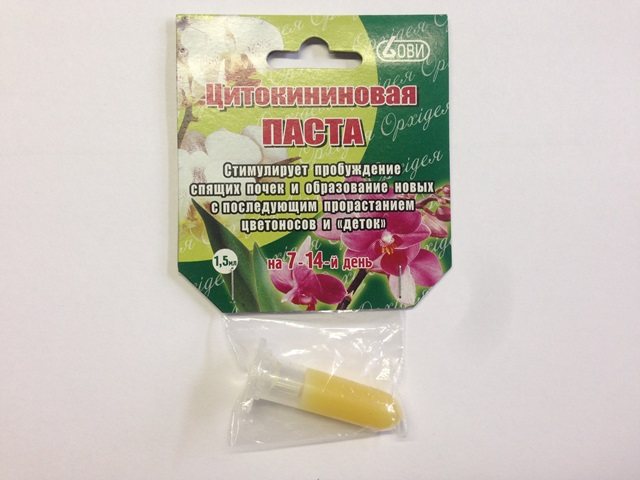

Cytokinin Paste is an excellent flowering stimulant
Cytokinin paste should not be used:
- when the plant is sick or affected by pests;
- use on children and young plants;
- apply to roots and leaves.
Do not try to artificially force a young specimen to bloom, which still has few leaves. You can achieve flowering, but the plant itself will weaken - it will hurt and give few buds. Wait until more than 5 leaves grow on the orchid.
Video: how to stimulate orchid flowering
How do the arrows go up?
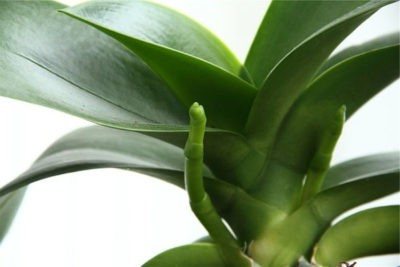

Wait until the arrow reaches a length of 15 - 20 cm. While it is green, it is very flexible and can easily change the direction of its growth.- The grown shoot must be fixed in an upright position using a support in a pot and a special clothespin (elastic bands, hairpins, etc.).
- If there is a risk of injury to the peduncle or even its scrapping, then fixation can be carried out gradually. In order to bring the peduncle as close as possible to the support, it is tied with an elastic band, rope, tape or bandage to the holder, gradually reducing the distance between them over time.
We offer you to watch a video on how to properly fix the peduncle so that it begins to grow up:
Table: care errors
| Symptoms | Cause | Elimination |
| Excess light |
|
| Lack of light |
|
| Salinization of the substrate | Transplant the orchid into a new substrate |
| Excessive amount of nutrients in the soil |
|
| Waterlogging of the substrate |
|
Table: flowering problems
| Problem | Causes and elimination |
| Orchid does not bloom after transplant | Feed with orchid fertilizer |
| Flowers withered |
|
| The orchid does not bloom for a long time |
|
| Only leaves and roots grow, peduncles do not appear |
|
| The orchid has released an arrow, but the buds are not developing. |
|
What is a flowering shoot?
A peduncle is a shoot (arrow) that extends from the base of a plant upwards, on which flowers are formed, or, in a narrower sense, a segment of the stem of a plant on which flowers are formed.
The flower stalk is very similar to the root of an orchid, therefore, inexperienced growers often make irreparable mistakes in caring for the plant, which can lead to fading or death of the peduncle. What are the main differences between a peduncle and a root?
- The shape of the root is round, and the peduncle is conical.
- The flowering shoot appears only from the leaf axil.
- An arrow appears above the site of the previous bloom.
- Necessarily the presence of irregularities on the peduncle - kidneys.
Most often, the orchid produces flower stalks in the fall, when the temperature differences between daytime and nighttime are large: from + 25C to + 15C. The average term for the formation of a flower arrow is 2 - 3 months (from the moment of appearance to the phase of the formed peduncle). If the grower creates comfortable conditions for the plant, then this process can be accelerated. At the same time, this will give a guarantee that the home beauty will definitely bloom.
Helping a blooming orchid
The flowering time of the orchid is the crown of the vigilant care of its owners. But even in the triumph of flourishing, a plant cannot do without the attention and help of a grower.
What to do when the orchid has released a peduncle
- Feed the orchid until the first flower appears. This usually takes about two months.
- Take care of the support of the peduncle in order to subsequently tie it to this support. You can use a bamboo stick or special holders that can be built on as the stalk grows.
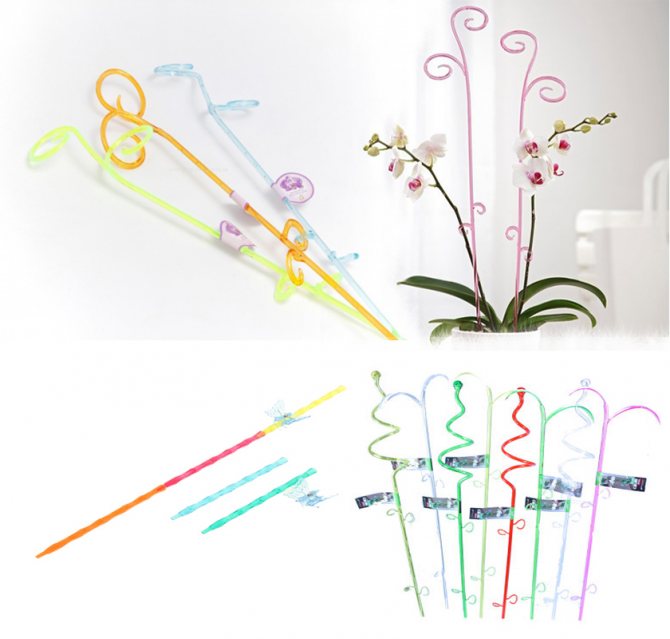

Orchid flower holder options
What to do if the peduncle is broken
If the fracture is small, treat it with an antiseptic (for example, ground cinnamon or activated carbon powder). Tie with soft tape or narrow tape.
When the fracture is severe, carefully trim it with a sharp, sterile knife and treat the cut with an antiseptic. In some types of orchids, a broken off piece of a peduncle can be rooted.
What to do with a peduncle after flowering
Peduncles after flowering should be cut off only when they dry up. You can cut the peduncle for a couple of buds. As a result, the plant will begin to release lateral peduncles, on which the buds will develop faster than on the main one, that is, flowering will continue.
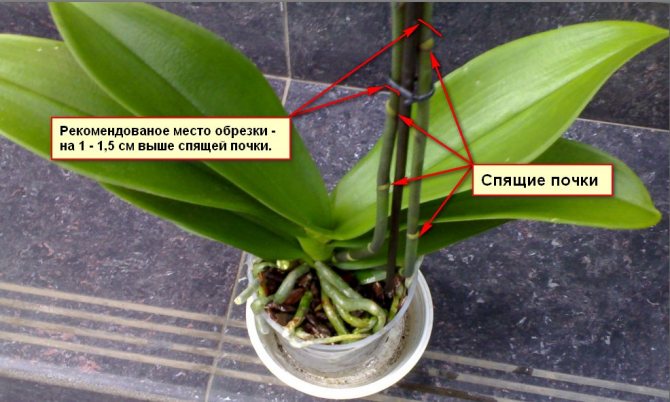

Pruning a stalk can awaken dormant buds
Video: the appearance of a repeated peduncle with a flower after pruning the old one
What to do if new babies began to grow on the peduncle
Wait until the children give roots, and then separate from the peduncle and plant in a separate bowl, feed with nitrogen fertilizer.
Is it possible to transplant a blooming orchid
This can only be done as a last resort. In this case, it is advisable to cut the upper flower buds so as not to overload the plant, which will experience stress after transplantation.
Try to create the most comfortable conditions for your orchid. If so, you probably won't have to use coercive measures to make it bloom.
Watering mode
In order to get our exotic plant to flower, you can reduce watering. If everything is in order with the root system, then for stimulation, you can dry the flower for 10 days, then water it, simultaneously immersing it in warm water for 15 minutes.
The beauty should be watered with settled water so that it is not hard.
The best option among the lucky owners of this flower is the “spillage” method. This will require 1–1.5 liters of settled water. We take the pot, go to the bathroom, hold the orchid in our hands and pour all the water taken from top to bottom. Then we wait for it to drain and return the flower to its habitat.
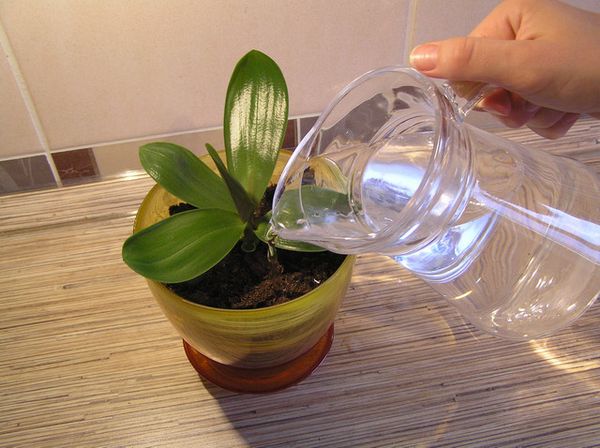

Thus, both the upper and lower roots receive water, there is no problem of stagnant water at the bottom, which leads to rotting of the root system.
How do you know when to water? There is no clear guidance on this issue. If the color of the root is green, you do not need to water. When there is condensation on the walls of the pot, you need to wait until it passes and water the flower in a couple of days.
You can also look at the weight of the pot, it should be light.

